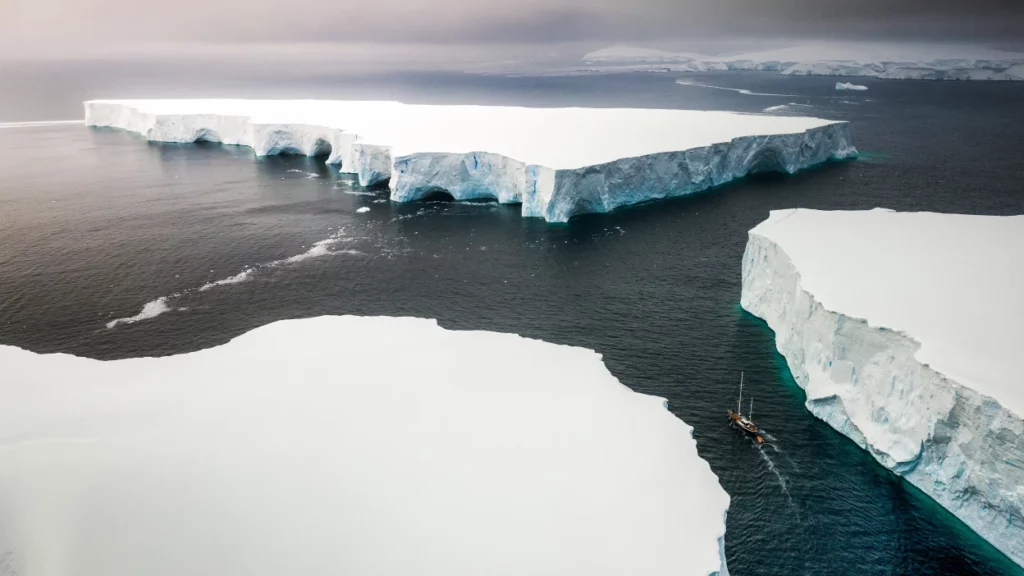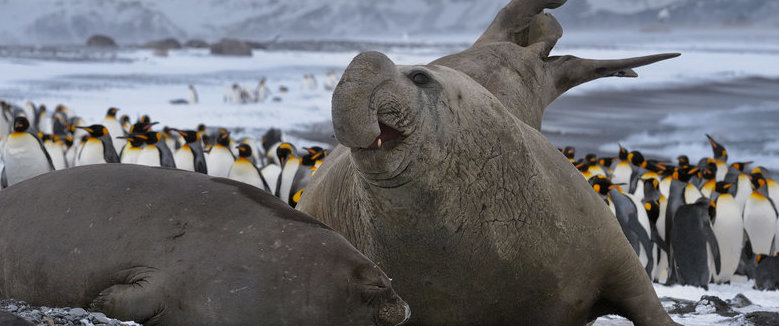Another issue with “the science” is that real science proceeds by trying hypotheses rather than trying heretics, frequently upends the conventional wisdom, and knows very little about most things. For instance woolly mammoths. While all species are valuable, even gross ones, we confess to feeling particular regret that those spectacular hairy, dome-headed, curly-tusked giants bit the frost and so recently too, just about 12,000 years ago, done in by blood-thirsty, ecologically reckless humans or climate change. Except we just got the dirt on this episode and it seems they did not die out when we thought, which puts a dent in the theories as to why they died then.
Before dealing with the elephant, as a general rule when you hear estimates of how many species are going extinct each year due to climate change or might be, or for any other reason, the first thing you want to do is determine whether any reputable basis exists for thinking the number is even plausible, let alone right. For instance by asking people to name them. Then looking around for proof that they really were extant last year or last decade, but no longer are. The second thing is to step back and ask just how many species there are.
The answer is, in fact, a big shrug. Nobody has any real idea. But at least some smart people know, with Ebenezer Scrooge on Christmas morning, that they don’t know anything.
If you Google “how many species of bats” you get an answer in under 2/3 of a second. In fact 48.5 million answers. Regrettably they differ considerably: the U.S. Department of the Interior says “over 1,400” while National Geographic says “more than 1,300 species” and the BBC says “more than 1,200 bat species” which, it adds, are “almost a fifth of all mammal species”. So bats are popular. Even if the World Atlas says “It is estimated that there are 900 to over 1,200 species of bats” before agreeing with that “one fifth” figure. Which means the total number of mammal species must also be somewhat uncertain, which is odd since, among their other qualities, mammals are normally fairly obvious and not just when they fly into your hair.
They even keep finding new bats, about 20 a year including “Myotis nimbaensis” which in addition to being a bat is also bright orange. So a little humility please. Especially as we go downscale to, for instance, bugs.
How many species of those often tiny critters do you think there are? Or just of beetles? Admit it. You don’t know. They keep finding new ones. As for bacteria, apparently there are a lot. As in 21,000. Or 200,000. Or a trillion. All estimates from one paper. (By the way if you’re thinking of doing your own search, the U.S. National Institutes of Health says there are “approximately 300 to 500 bacterial species” just in your belly, which you’ll notice contains a margin of uncertainty nearly as big as the low estimate.) And even putting the microbes aside, National Geographic says “Scientists have estimated that there are around 8.7 million species of plants and animals in existence. However, only around 1.2 million species have been identified and described so far, most of which are insects.”
Some of course are whales. And we have a pretty good idea how many of them there are. Ninety. Seventy-six toothed, counting dolphins and porpoises, and 14 “baleen” whales which tend to be the giants according to Whale and Dolphin Conservation a.k.a. uk.whales.org. Although the precision of that answer is blurred a bit by a rival claim that there are “around 90 species” made by… uh… Whale and Dolphin Conservation. Wikipedia goes with 89. Hawaii Ocean Sports claims 86, sourced to “the Society for Marine Mammalogy”. And again, whales are kind of big and obvious.
If it’s hard to miss a whale, what about an elephant, which can’t hide underwater? An especially big one. With hair on it and curly tusks. But here too there’s some excuse for being especially baffled, because they perished before the invention of writing, let alone cameras or the Google search. And typically, we don’t know why. Or um when.
The notion that humans recklessly hunted these magnificent beasts and others into extinction was popular in the Vietnam-era territorial-imperative naked-ape pop anthropology saying humans are just animals except we’re really vicious unlike our gentle cousins. But then it became fashionable to blame it on climate change, even though since it predated the invention of the SUV by 12,000 years it had to be natural climate change. Nevertheless any time you can show climate-driven mass extinctions, especially of something picturesque, it is grist for the AGW mill. Awkwardly, you would have to admit that there had been very abrupt natural climate change 12,000 years ago, but in return you could say, well, the next one’s on us and it will take out the bald elephants.
Which is where we now get down not just into the weeds but under them, because scientists have been doing the modern equivalent of panning for gold by combing through soil samples looking for DNA and once again they found it in the Yukon. They discovered that the same woolly mammoths supposedly driven extinct by early man and early climate change appear to have outlived both by thousands of years.
As you might imagine, it’s precise, painstaking work that makes actual panning for gold look relaxing. And of course our ridiculing of the “scientists say” meme ought not to be taken as ridiculing actual science, just popular misrepresentations of it.
Real science is full of surprises, including the apparent discovery that mammoths hung on for thousands of years longer than we used to think. It’s quite on the level of turning around and finding yourself face to tusk with a living breathing Mammuthus primigenius. But it’s certainly also not boring, settled or political.



"...the same woolly mammoths supposedly driven extinct by early man..." Early man? Which would that be? Homo habilis, Homo erectus, Homo heidelbergensis...?